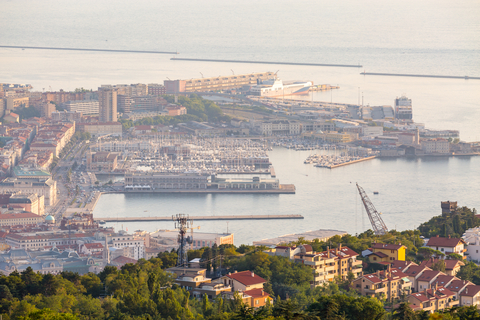Proximity and Efficiency: Central Europe Becomes a Hub for Bike Production
The bicycle and e-bike industry is undergoing a transformative shift in 2025, with Central Europe (C
moreXtreme Fitness Gyms Targets Dominance in Eastern European Fitness Market
Polish fitness franchise Xtreme Fitness Gyms is making waves in the fitness industry, celebrating th
moreAdidas Expands Presence in Switzerland with Zurich Branch
Adidas, the global sporting goods powerhouse, is strengthening its foothold in Central Europe (CE) b
morePolish Brand 4F Becomes Official Technical Supplier for National Volleyball Teams
Polish sportswear brand 4F has announced a landmark partnership, becoming the official technical sup
moreFriction Labs Joins Crag Sport Portfolio: A New Business Partner for Climbers in Central Europe
Krakow-based Crag Sport, a recognized expert in business development in Central Europe (CE), has exp
more
"Business
Partner search for the Sports industry in Central Europe"
You are here » Home Page
» CE Sports Business News
» China’s Belt Road Initiative: good news for Central Europe?
 2016-05-24
source own
2016-05-24
source own
China’s Belt Road Initiative: good news for Central Europe?
 2016-05-24
source own
2016-05-24
source own
Much of China’s Belt and Road Initiative has been discussed in recent times and this can be justified given the impact it will have to a number of countries. 65 countries, 3 continents and 4 billion people are set to be affected by the initiative which equates to over half of the world’s collective grade domestic product. Some people are worried about the challenges that will be brought by such a project but others are simply excited for the avenues that may be opened for them.
One of these advantages that has been examined of late is the affect that the initiative will have on South East Europe; in fact, it was analysed by the European Bank for Reconstruction and Development (EBRD) and the Central European Initiative (CEI) in a recent conference. The main message that seemed to arise from the meeting was that many countries were looking forward to the opportunities that would be presented upon completion of the project.
The conference also noted that for the project to be completely successfully, there will need to be cooperation and involvement from more parties. Currently, the Silk Road Fund has been valued at around $40 billion and will undoubtedly go a long way but cooperation is still needed with many countries, financial institutions, development banks, the private sector, and more. Graziano Delrio, Italy’s Minister of Transport and Infrastructure, noted “Competition is healthy but cooperation is key.”
A coming together and joining of forces is required for a number of reasons but perhaps most importantly, to make use of finite resources and to prevent the duplication of plans. With this being said, there are still more than a few who are somewhat skeptical of the plans. European Commission Representative, Alain Baron, said “Before we make any investment in infrastructure we have to ask ourselves honestly: do we really need this project?”. Similarly, the Managing Director for Infrastructure at the EBRD, Thomas Maier, said “Projects must be bankable, compatible, and represent a win-win; they must be beneficial for the investor as well as the recipient.”
South East Europe was a major focus for the conference and this region was especially considered above all others. Secretary General of the Central European Initiative, Giovanni Caracciolo di Vietri, noted “Our goal is the further rapprochement of the CEI countries outside the EU with those already inside.” EBRD Acting Vice President, Alain Pilloux, added “After being hit hard by the global financial crisis of 2007/2008, the region is now in the mend. What we are seeing is maturing economies, advancing reforms and political stability.”
Pilloux went on to state that support really was possible in the coming months and years especially after London 2014 and 2016; the EBRD are currently making the relevant arrangements. Pilloux said that cooperation was tangible now also with thanks to Berlin 2014, Vienna 2015, Paris 2016. According to the EBRD’s Managing Director SME Finance, Claudio Viezzoli, cooperation is bordering on urgent as countries will become stronger as a unit rather than apart but also to help increase growth. He said “Only 20% of what the countries produce is traded regionally, the rest is exported to the EU.”
China can offer a huge market for anyone willing to cooperate and this has already been snapped up by many including Zaragoza, a town in the north of Spain. A member of the Chinese State Council discussed how a number of small and medium sized business (SMEs) have established relationships with Chinese customers. In addition to this, the people of China are also taking to Italy’s offers of culture, lifestyle and the apparently popular food and drinks industry. According to Chinese Ambassador Ruiyu, the Chinese public has gone ‘crazy’ for cappuccinos.
The successful markets in China could prove to be a turning point for countries that were previously unwilling to cooperate or who hadn't necessarily decided one way or another. EBRD’s Managing Director for Economics, Policy and Governance, Mattia Romani, has said “Connections work in two ways. Containers that arrive fully loaded do not need to go back empty.”
A number of high-profile figures were in attendance of the meeting in Trieste including representatives from the EU, the CEI, the EIB, China, and more. Discussions were centred around how the Belt and Road Initiative would affect the small and medium-sized businesses located in South East Europe; some small groups then broke off for separate discussions.
You might be also interested in these articles;
Fresh wave of support for Central Asian small businesses
Lithuania's growing partnership with China
Good year for German fitness market
New office in Singapore for CzechTrade
First ever visit to Czech Republic for a Chinese head of state









